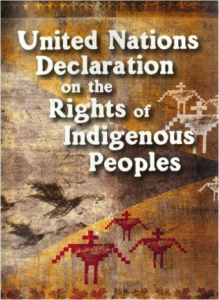Archivists like to think of their institutions as places of remembrance – where the past is documented and organized, and where researchers go to construct narratives of historical events.
All of this romanticization is fine when an archive is holding onto the artifacts of its own culture. But, what happens to a people when outsiders control access to their documentary history? What becomes of a people separated from the products of their past?
In studying to become a future archivist, these are questions I have found myself increasingly contemplating upon. And, as it so happens, these are precisely the topics our TLAM class found itself talking about on the Thursday of March 10.
We discussed how, in America, archives are closely linked to state governments, often controlled by non-native people, and typically situated a great distance away from indigenous communities. Our readings for the week contained a quote from William T. Hagan, which I think succinctly states the outcomes of such circumstances:
“To be an Indian is to have non-Indians control your documents from which other non-Indians write their versions of your history.”

It is partly a result of colonial legacies such as these that the United Nations drafted their Declaration on the Rights of Indigenous Peoples. The declaration compels signatory countries to respect the right of indigenous peoples to not only participate equally in state institutions, but also to establish and cultivate cultural institutions of their own.
The declaration is non-binding, but it has led to a flourishing of new articles concerning archival best practice. Over the last decade shared-stewardship protocols – which impact the preservation, use, and continued retention of Native American collections – have been put in place by many archival institutions.
These protocols allow indigenous peoples an equal say in how their cultural artifacts are used by outsiders. The existence of such relationships allows room for mutual discussion and an opportunity for addressing historical injustice.
For many indigenous nations, however, the ultimate goal is to establish archival institutions of their own. This will allow them to re-establish physical as well as intellectual control over the documents and artifacts depicting their past. By doing so, they can recapture their own cultural narratives.
-Arik Kriha
